wargadget
Latest

US Navy decommissions the first nuclear-powered aircraft carrier
It's the end of an era for the US sea power, in more ways than one: the Navy has decommissioned the USS Enterprise (CVN-65), the world's first nuclear-powered aircraft carrier. The vessel launched in 1961 and is mainly known for playing a pivotal role in several major incidents and conflicts, including the Cuban Missile Crisis, the Vietnam War and the 2003 Iraq War. However, it also served as the quintessential showcase for what nuclear ships could do. Its eight reactors let it run for years at a time, all the while making more room for the aircraft and their fuel.
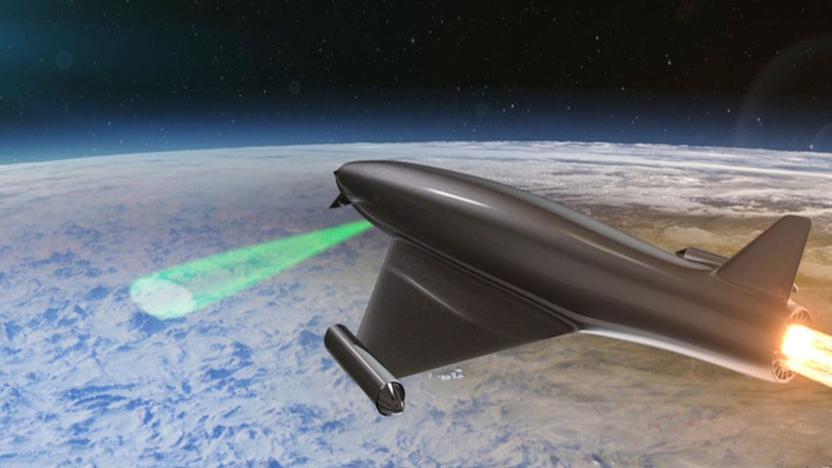
Atmospheric 'lens' could shield troops from laser weapons
How do you defend yourself against laser weapons when they fire at the speed of light? BAE Systems has an idea. It's developing Laser Developed Atmospheric Lens technology that, as the name suggests, uses lasers to temporarily ionize the atmosphere to create lens-like structures. If you're facing a laser attack, you just have to form a lens to serve as a refractive shield. The technology could protect both aircraft and land-based forces from deadly blasts, and it could fill other roles as well.
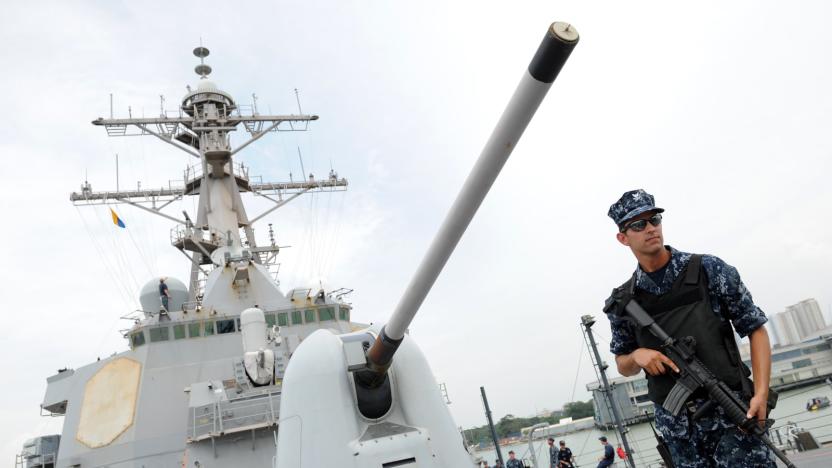
Smart bullets will help warships fend off drone swarms
Navies already have a lot to worry about between rival warships and aircraft, but it's only going to get worse when drone swarms of all kinds threaten to overwhelm their defenses. The US Navy might not have that problem, though: DARPA just tapped Raytheon for the second phase of a smart bullet development project that will help fight off swarming attacks. The MAD-FIRES project (Multi Azimuth Defense Fast Intercept Round Engagement System) should lead to ammo that's as fast and small as what you'd find in a medium-caliber gun (20- to 40-caliber), but with the guidance of a missile. if a horde of robotic flyers appeared, a vessel could theoretically take all of them out even if they're approaching from different directions.
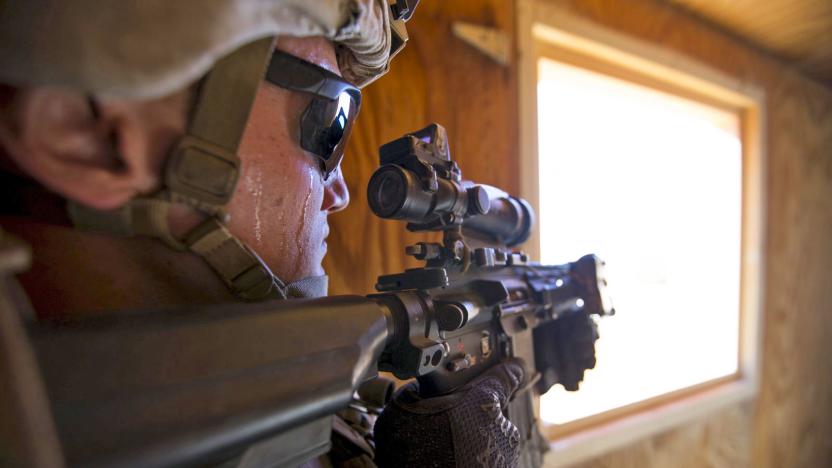
Smart body armor could gauge brain damage from explosions
Explosions are insidious. Even if a blast doesn't deliver a conspicuous injury, it can inflict brain trauma that might not be evident until much later. The US Navy's Office of Naval Research doesn't want medics to wait, though. It's developing Blast Load Assessment Sense and Test (conveniently, BLAST), a sensor system that could determine whether or not an explosion's shockwave is likely to have injured your brain. Tiny sensors in your helmet and body armor would record the blast pressure and share it with a scanner. When combined with a palm-sized neurological assessment tool (which stimulates your fingers to gauge your responses), the data would let medical teams quickly decide whether or not you're able to fight.
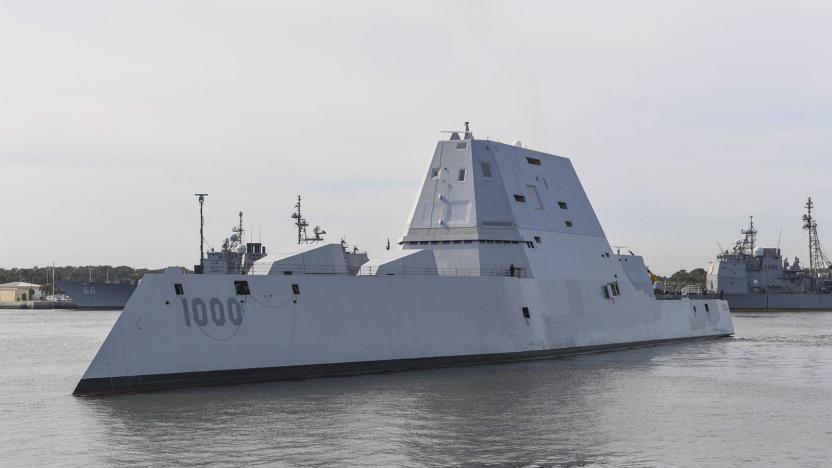
US' new stealth destroyer may finally have affordable ammo
To put it mildly, the US screwed up when it decided to carry on with its Zumwalt-class stealth destroyers when they depended on smart ammo the Navy couldn't afford. However, it might have a clever workaround. Officials speaking to USNI News say the Navy is looking at Raytheon's Excalibur, a GPS-guided artillery round, as a substitute for the custom LRLAP (Long Range Land Attack Projectile) shells the Zumwalt's main guns were designed to use. Excalibur has roughly half the range at about 30 miles, but it costs much less -- about a quarter of the $800,000-plus cost per round of LRLAP. It can also hit moving targets where LRLAP couldn't.
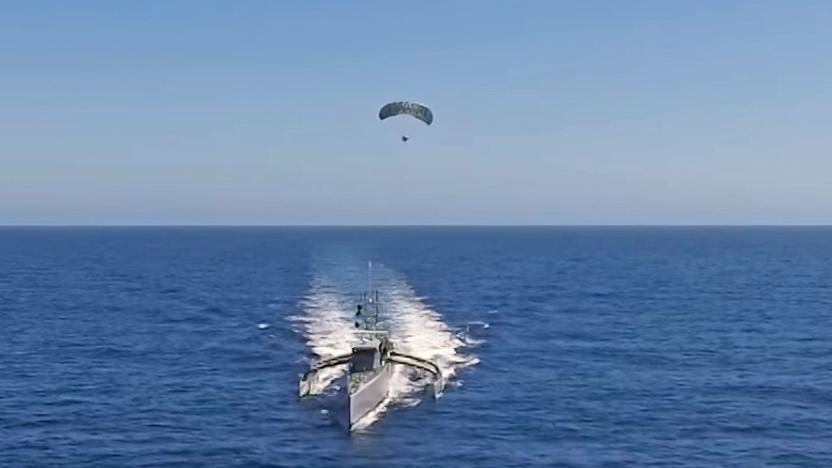
DARPA tests parasailing radar with its robotic boat
If you want a vision of what naval battles could look like in the near future, you just got it. DARPA has tested a parasailing radar array (part of its Towed Airborne Lift of Naval Systems project, or TALONS) using its robotic ACTUV boat as a nest. The array flew up to 1,000 feet, where its sensors were far more effective than they'd be at ship level. Its surface tracking radar had six times the range, and even a handheld radio covered three times its usual distance. The combination could lead to unmanned warships that not only travel for months on end, but can easily detect potential threats before they're in firing range.

Chevy truck brings hydrogen fuel cells to the military
Hydrogen fuel cell vehicles aren't just for eco-conscious civilian drivers. Chevy has unveiled the Colorado ZH2, an experimental truck designed to test the feasibility of fuel cells in the military. Its powerplant is much quieter and cooler-running than a conventional gas motor, making it ideal for special ops where conventional trucks would blow your cover. However, its real specialty doesn't involve driving at all -- you can use the modular cell to power devices outside the truck with up to 25kW of continuous electricity. A squad could run equipment while camped out in mid-mission, for example.
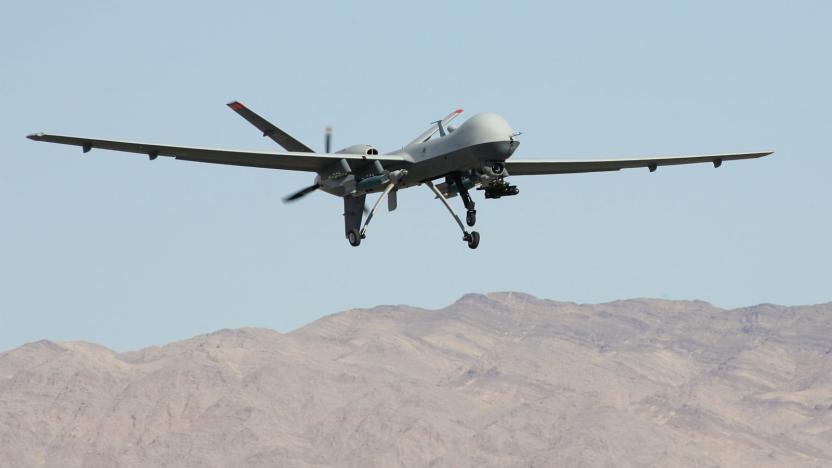
Drones can defend themselves with an anti-laser jammer
There are plenty of efforts to make drone-destroying lasers. But what about protecting those drones? Adsys Controls thinks it can help. It's making Helios, a passive jammer that confuses laser weapons. If it detects an incoming laser beam, it detects the traits of that beam (such as its pulse and wavelength) and interferes with them to prevent the laser from locking on and toasting the drone. The company won't say exactly how this interference works, although it may be a counter laser. The one certainty is that it's reliable -- this is "permanent protection" against subsequent lock-on attempts, not just a momentary break.

Air Force boosts drone pilot bonuses to keep up with demand
It's no secret that the US Air Force is doing everything it can to recruit and keep drone pilots, and now it's resorting to a very direct solution: cold, hard cash. The military branch is offering $10,000 more per year in bonuses to those pilots who renew their active duty commitment for 5 years. They were already getting a hefty $25,000 extra per year, but this is a huge incentive -- if a pilot is active for the full term, that's a total of $175,000 above and beyond their usual pay.
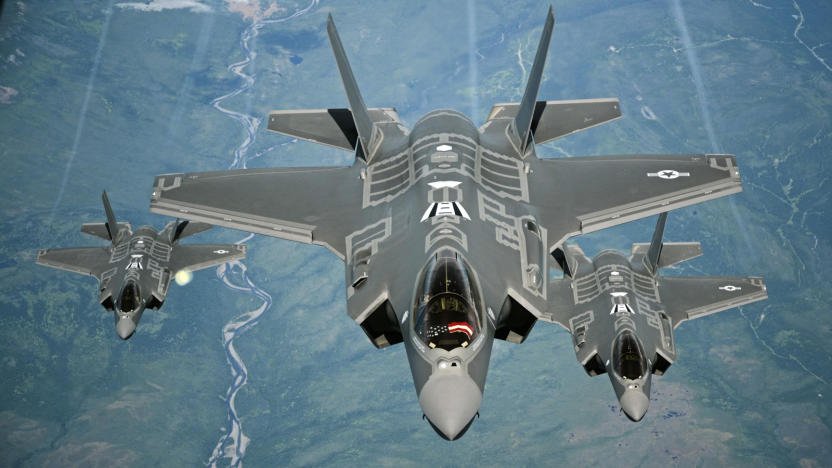
US Air Force says the F-35 is ready for combat
The F-35 Lightning II has faced more than a few technical problems and cost overruns in the 15 years since Lockheed Martin first won its production contract, but it's nearly done overcoming those hurdles. The US Air Force has declared that the F-35A (that is, the conventional takeoff model) is officially ready for combat. The first squadron to get the advanced jet, the 34th Fighter Squadron at Utah's Hill Air Force Base, can now deploy it on real-world missions if necessary.

Iraqis use off-the-shelf drones to battle ISIS
Let's say you're leading an Iraqi militia. You want to reconnoiter ISIS fighters' positions, but you don't have the budget for military-grade UAVs or helicopters. What to do? For the Iraqis themselves, the answer is simple: buy everyday drones. As Wired notes, both Shia militias and Iraqi officials are using consumer drones bought in hobby and toy stores (like DJI's Phantom line) to observe ISIS positions and help call artillery strikes. They seldom last for more than 40 minutes in the air, but that's enough to provide a heads-up and improve accuracy.
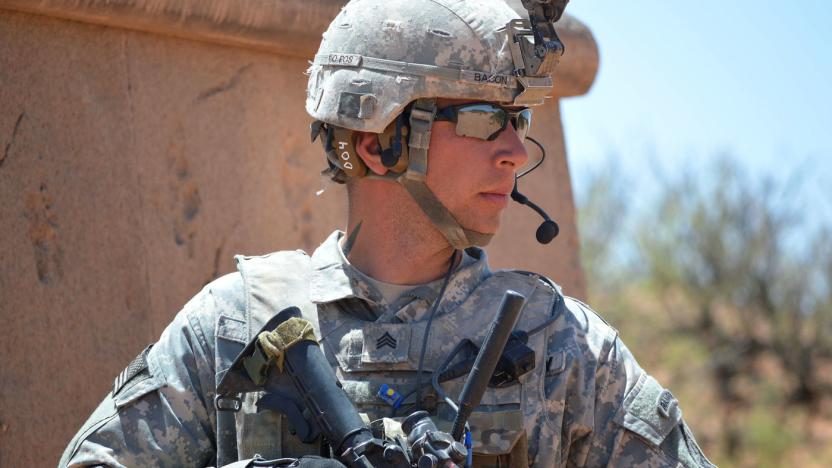
US Army's smart earplugs spare soldiers from loud noises
As you might imagine, soldiers can't just use garden variety earplugs to protect their ears. It might tone down the sounds of explosions and gunshots, but it'll also prevent them from hearing a crucial command or an enemy on the other side of a doorway. It's less of an issue for the US Army these days, though. The military branch has been gradually rolling out a smart earplug, TCAPS (Tactical Communication and Protective System), that adapts to the audio realities of war. The smartphone-linked device softens louder noises, but amplifies quieter ones; if your squad leader needs to issue a command, you'll hear it over the din of battle.
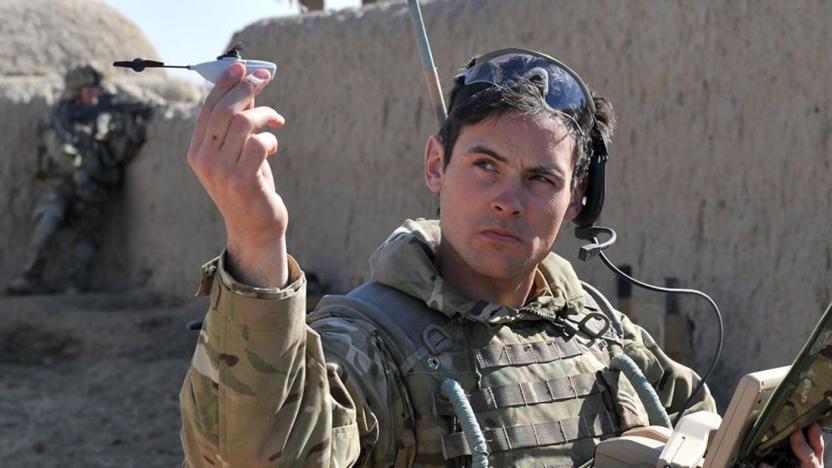
US Army hopes to outfit soldiers with tiny drones by 2018
American soldiers should soon get drone support beyond just big, expensive machines flying well above the battlefield. The US Army has requested industry information on the feasibility of making tiny drones (Soldier Borne Sensors in official lingo) that would help infantry gather intelligence on a small scale, such as peeping over a hill or around a building. Its dream recon machine would weigh no more than a third of a pound, launch within one minute and fly for at least 15 minutes. Ideally, the drones would be in service as soon as 2018.

Lockheed Martin's hypersonic aircraft plans are taking shape
For years, Lockheed Martin has been working on hypersonic (Mach 5 and above) aircraft like the SR-72, which could reach virtually any part of the world within a couple of hours. These vehicles have long been seen as distant prospects (the SR-72 might not reach service until 2030 at the earliest), but they now appear to be coming together. Lockheed tells the press that it expects to fly a demonstrator hypersonic aircraft "the size of an F-22" at a cost of less than $1 billion. That's no mean feat when some conventional programs cost more, and it's a hint that hypersonic technology is becoming a practical reality.
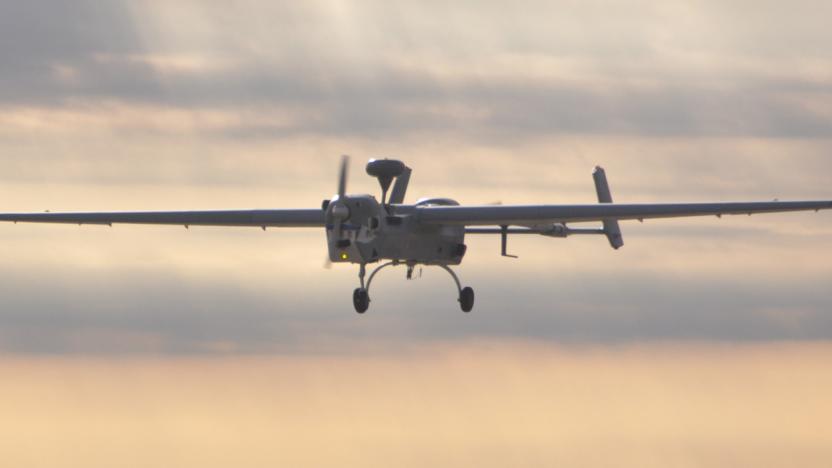
US Army retires its first drone
Military drones may still seem like relatively fresh concepts, but they're officially old hat as of this month: the US Army has retired its first-ever drone, IAI's Hunter, after 20 (!) years of service. The robotic recon veteran will now see use only through government-owned contractor support units. The troops, meanwhile, will upgrade to the General Atomics Gray Eagle, which boasts better sensors on top of greater endurance (25 hours instead of 12) and a higher altitude ceiling (29,000 feet versus 15,000).

US Air Force allows enlisted ranks to fly drones
The US Air Force is hurting for drone pilots, and it's willing to take an unusual step to make sure its unmanned aircraft are well-staffed: it's letting the enlisted ranks fly. As of next year, non-officers can pilot the RQ-4 Global Hawk recon drone once they have the necessary training. The move (along with help from other branches) should give the Air Force more daily combat air patrols even as it grapples with the effects of budget cuts. It promises a morale boost, too, as everyone could get more training and better hours.

Air Force torch cuts through locks like a hot knife through butter
Firefighters, police and soldiers don't have many good options when they want to breach a door: blowtorches and lock picks are usually slow, while battering rams, explosives and guns aren't exactly subtle. The US Air Force and EMPI recently crafted a far better solution, though. Their TEC Torch creates a brief but super-hot (5,000F) metal vapor jet that cuts through steel in less than a second, making short work of virtually any lock. In some ways, it's like Star Wars' Qui-Gon Jinn cutting through doors with a lightsaber -- it's just faster and less dramatic.

The US Army lost control of a radar blimp
It's the runaway llamas all over again... in airborne form. One of the US Army's missile-detecting radar blimps broke off its tether in Maryland, creating havoc both in the skies (the Air Force even sent fighter jets to track it) and among the many, many internet users following its every move. It eventually drifted over Pennsylvania, and there are reports that it knocked out power lines at a school in the state before coming down. We're still waiting to know the blimp's health, but it's safe to say that the Army will be more than a little red-faced as it looks into what went wrong.

Northrop Grumman lands USAF deal for new long-range strike bomber
Defense Secretary Ash Carter and Air Force Secretary Deborah Lee James announced on Tuesday that the DoD has awarded Northrop Grumman the lead contract for the US military's upcoming Long-Range Strike Bomber (LRSB). The contract is valued $60 billion, making it the single largest airframe contract since Lockheed won the deal for the $400 billion F-35 Joint Strike Fighter over a decade ago. At that price, the 21 airframes on order are expected to cost roughly $564 million apiece (in FY2016 dollars).

US Army will test a smart grenade launcher that hits hidden targets
After years of work, Orbital ATK (born from Orbital Sciences) is close to delivering a clever weapon that could help American soldiers in very tricky situations. As of early 2016, the US Army will start acceptance testing for the XM25, a smart grenade launcher that can defeat enemies behind cover. In normal use, all you have to do is point at an enemy (up to 1,640 feet away) and let the XM25's laser rangefinder decide when your grenade explodes. If a target is hiding, however, you can dial in extra distance (up to 2,300 feet away) and explode the grenade in mid-air. Troops theoretically don't have to expose themselves to line up a shot -- they just pick a close-enough point and pull the trigger.

